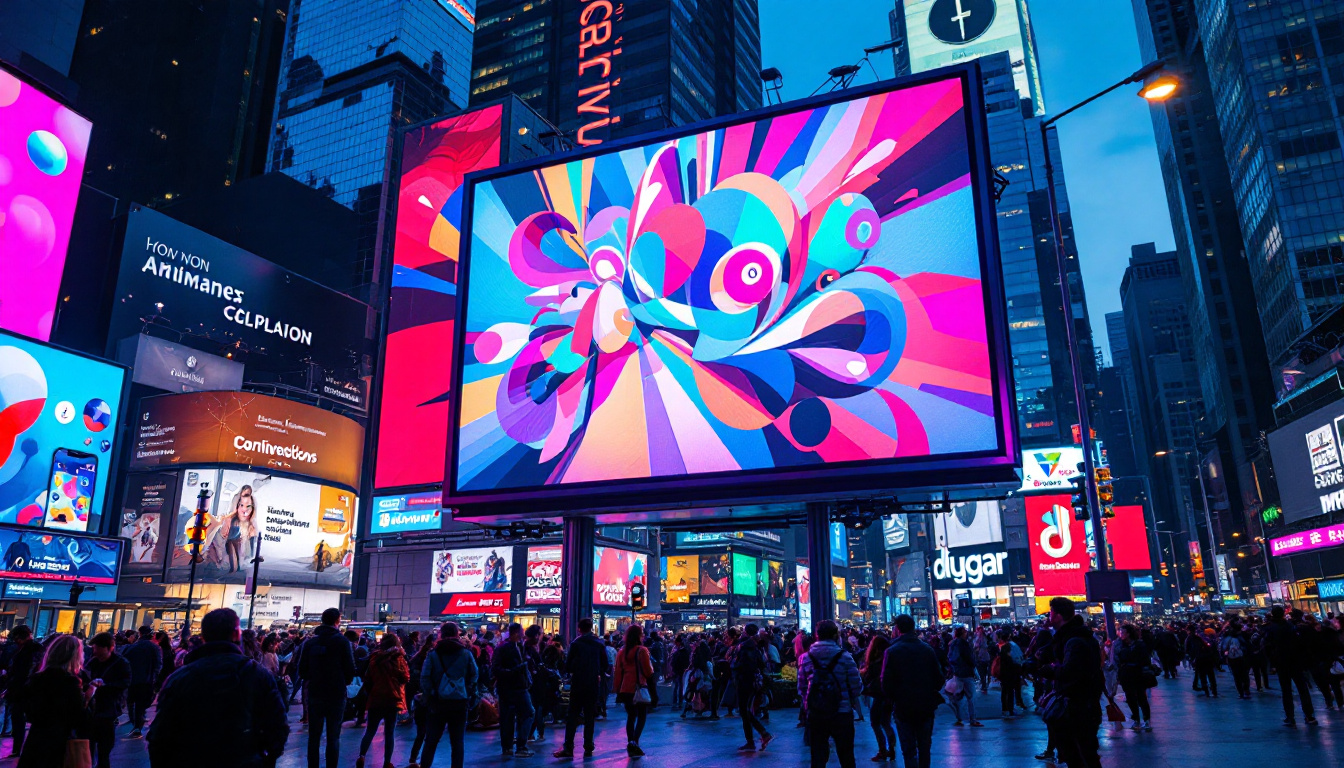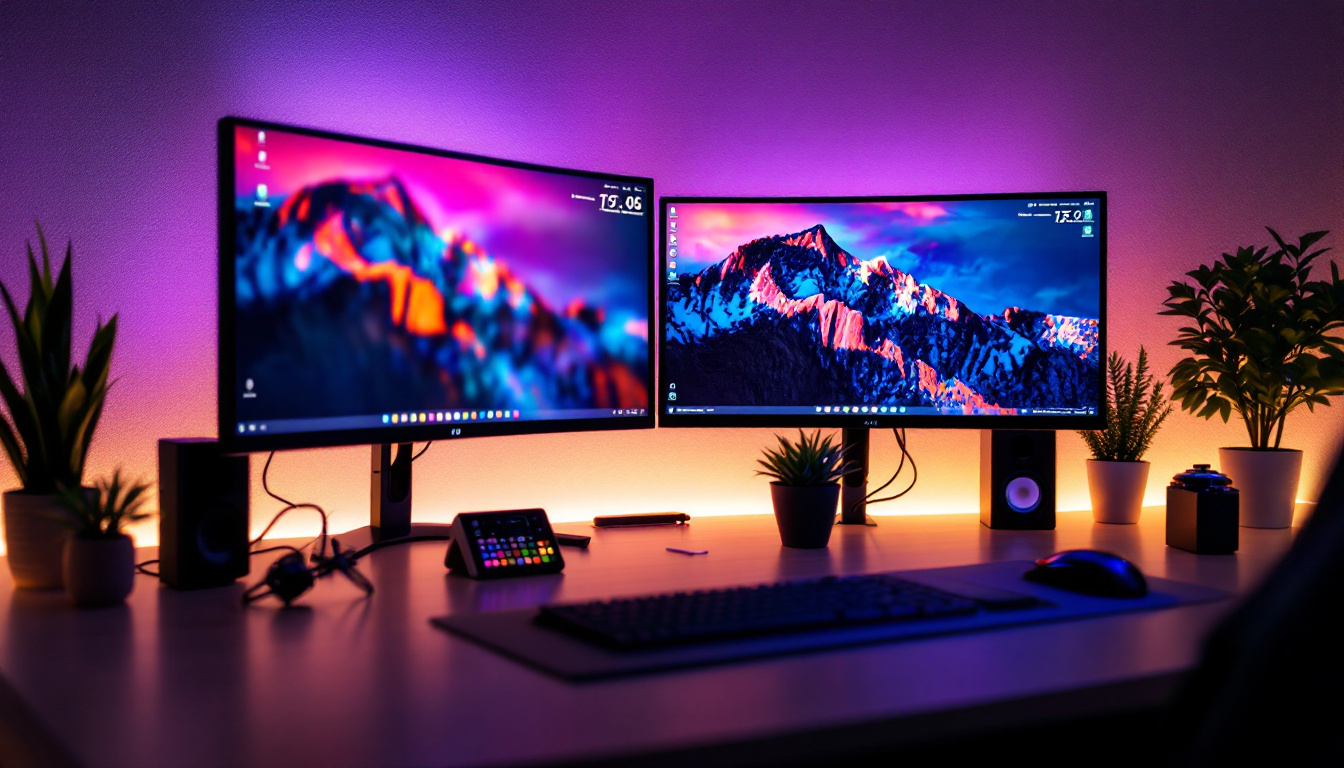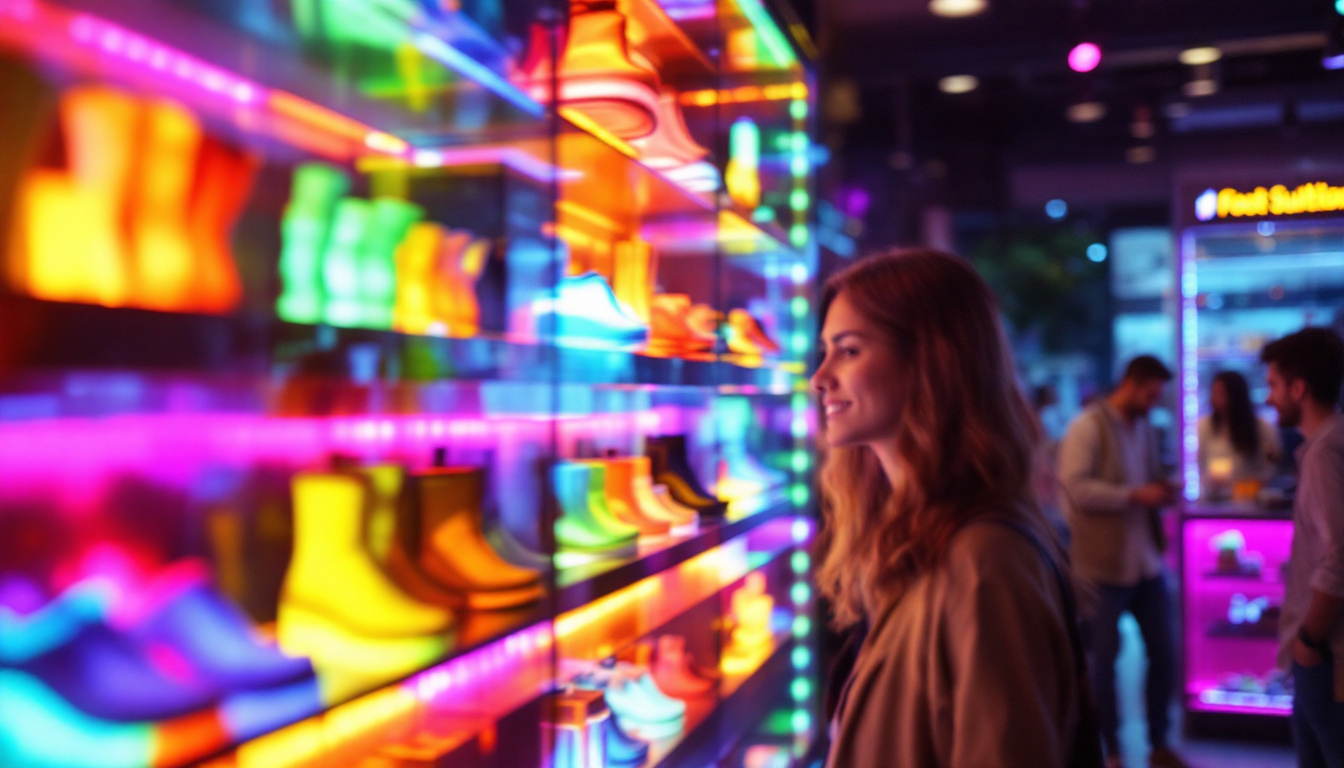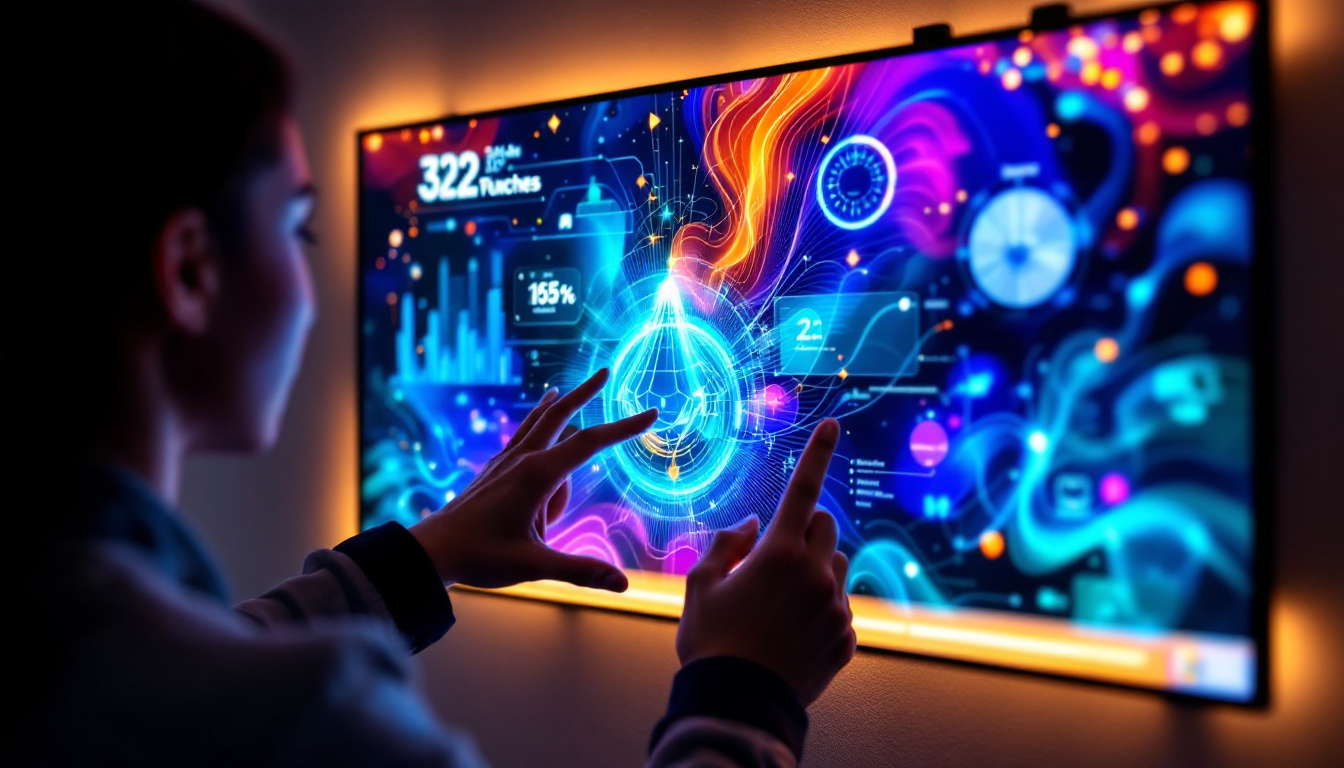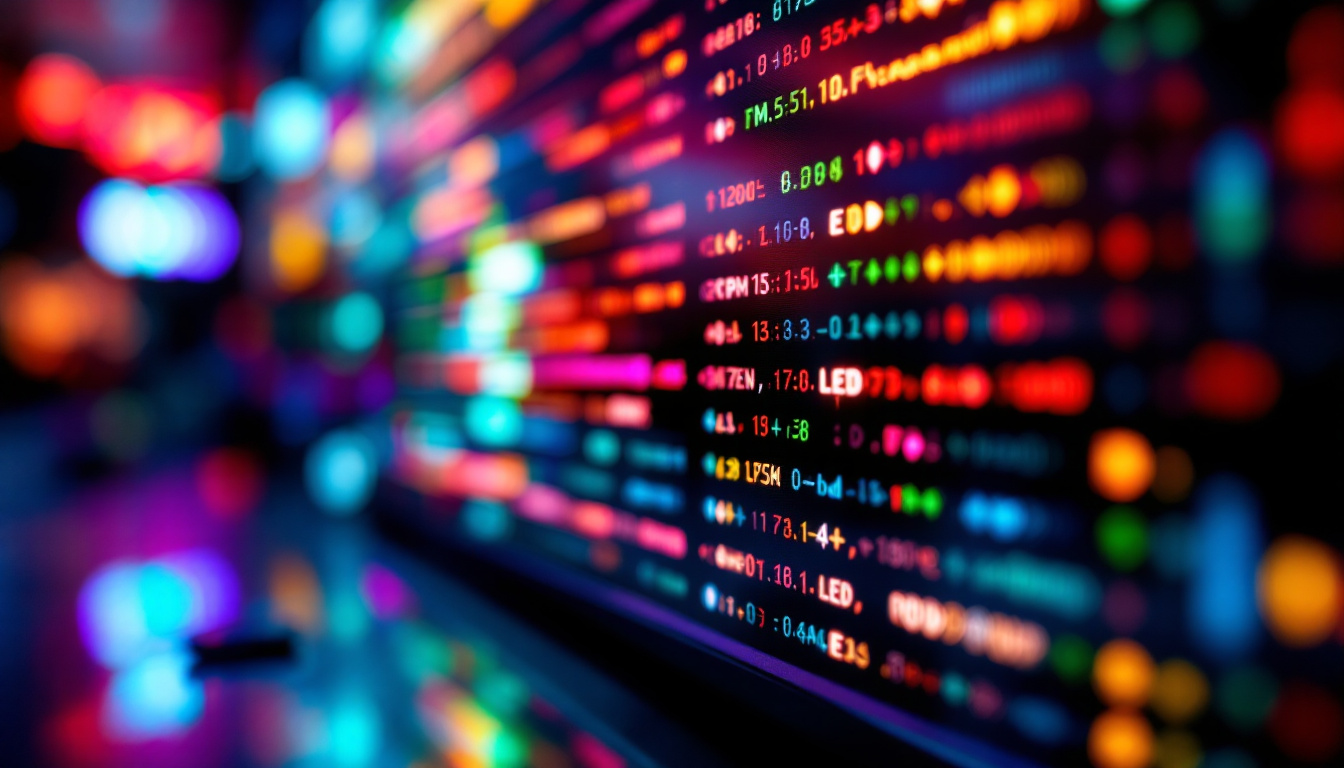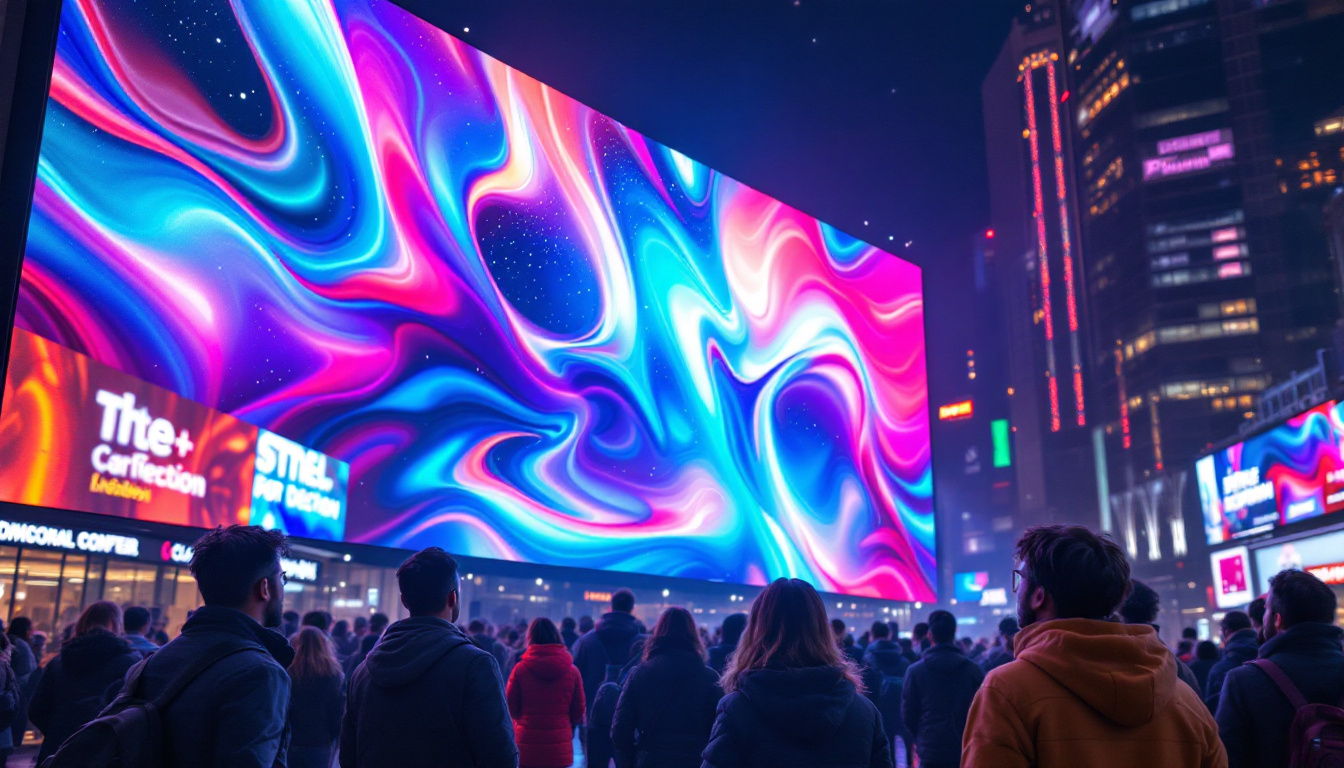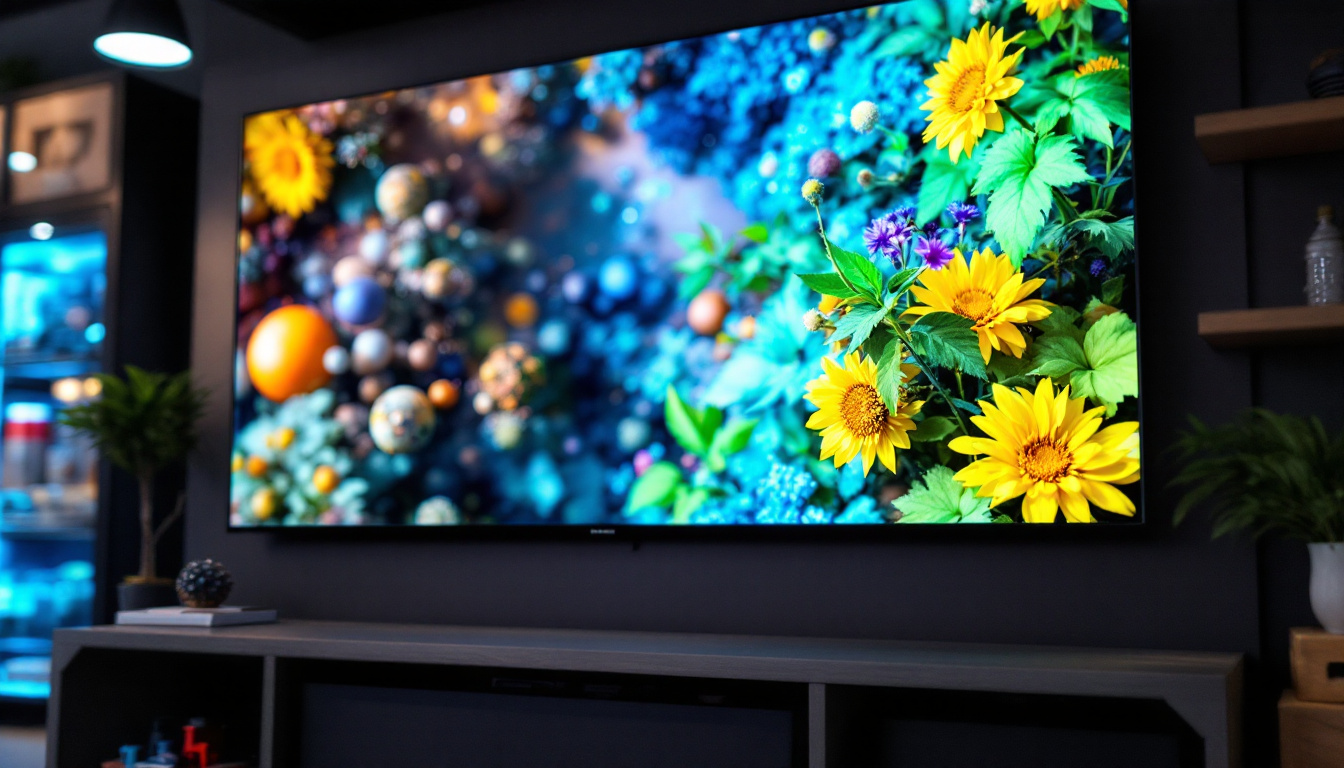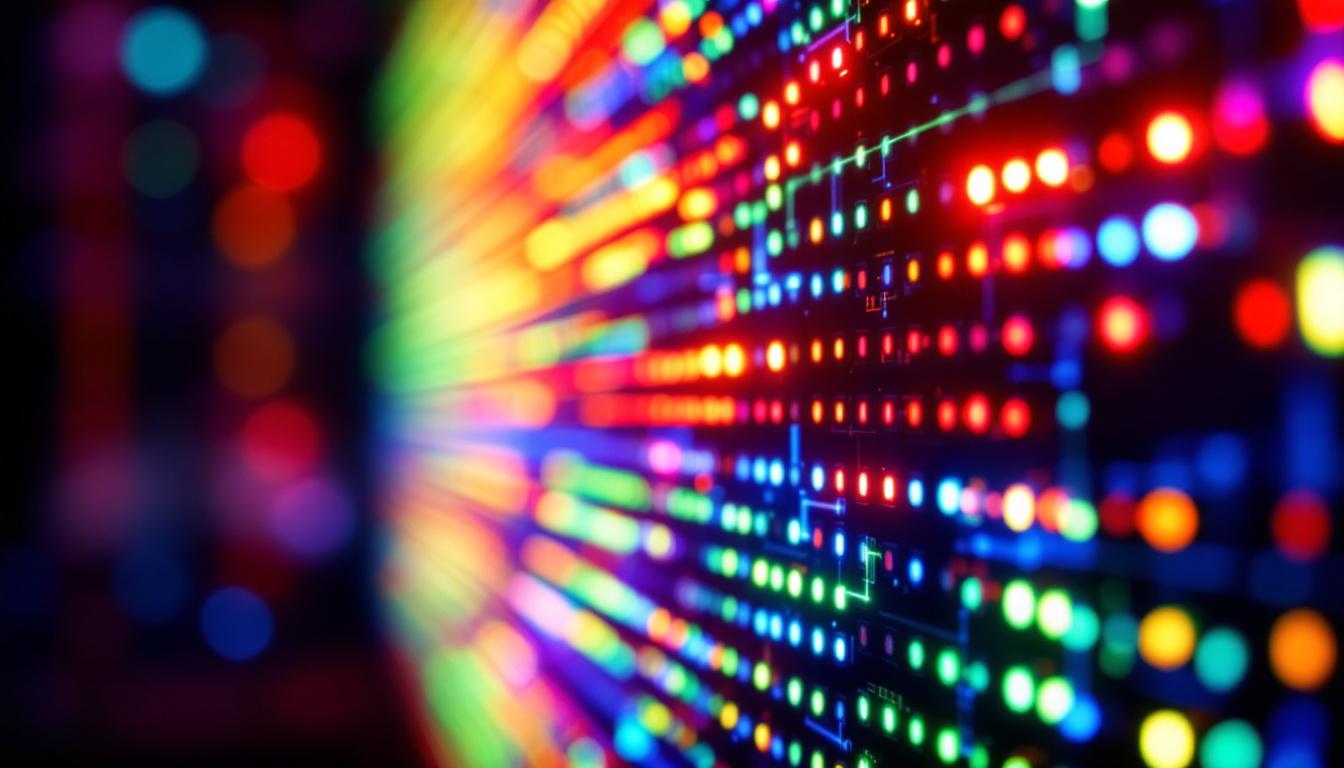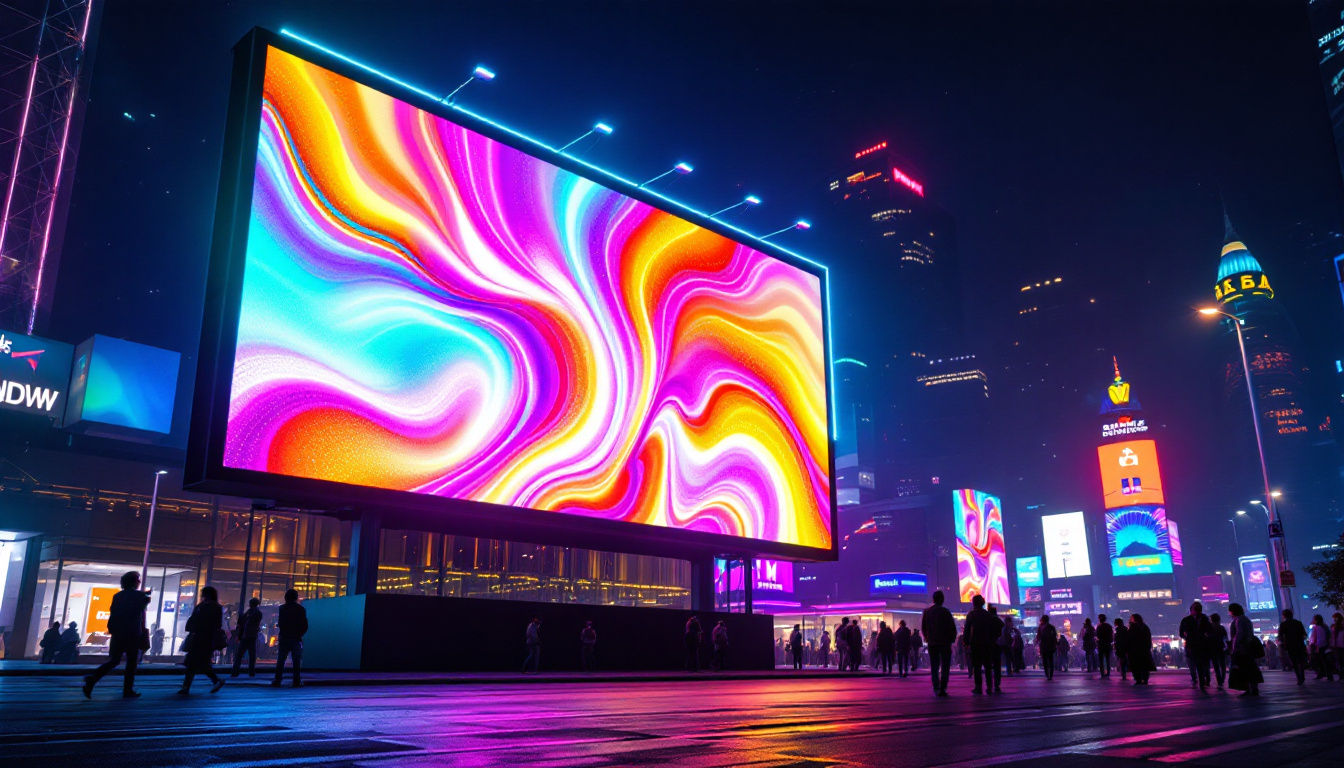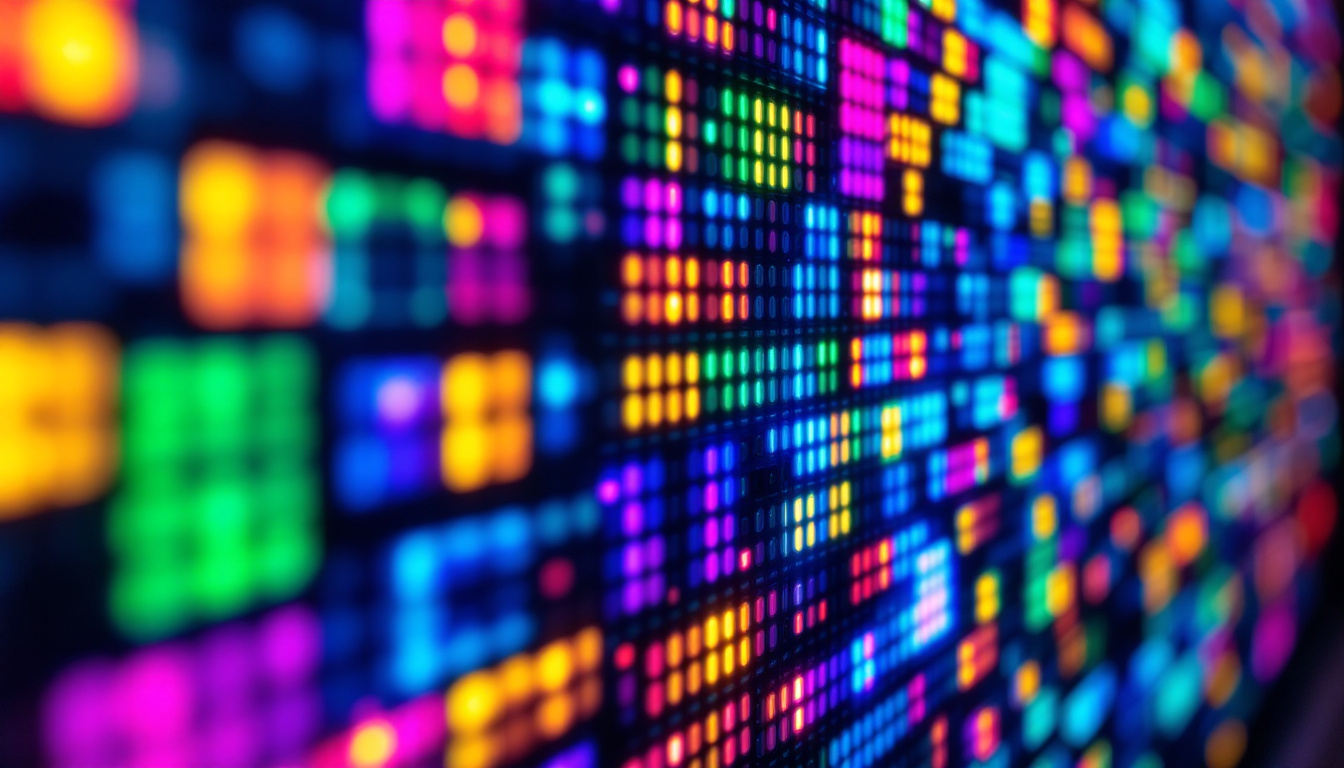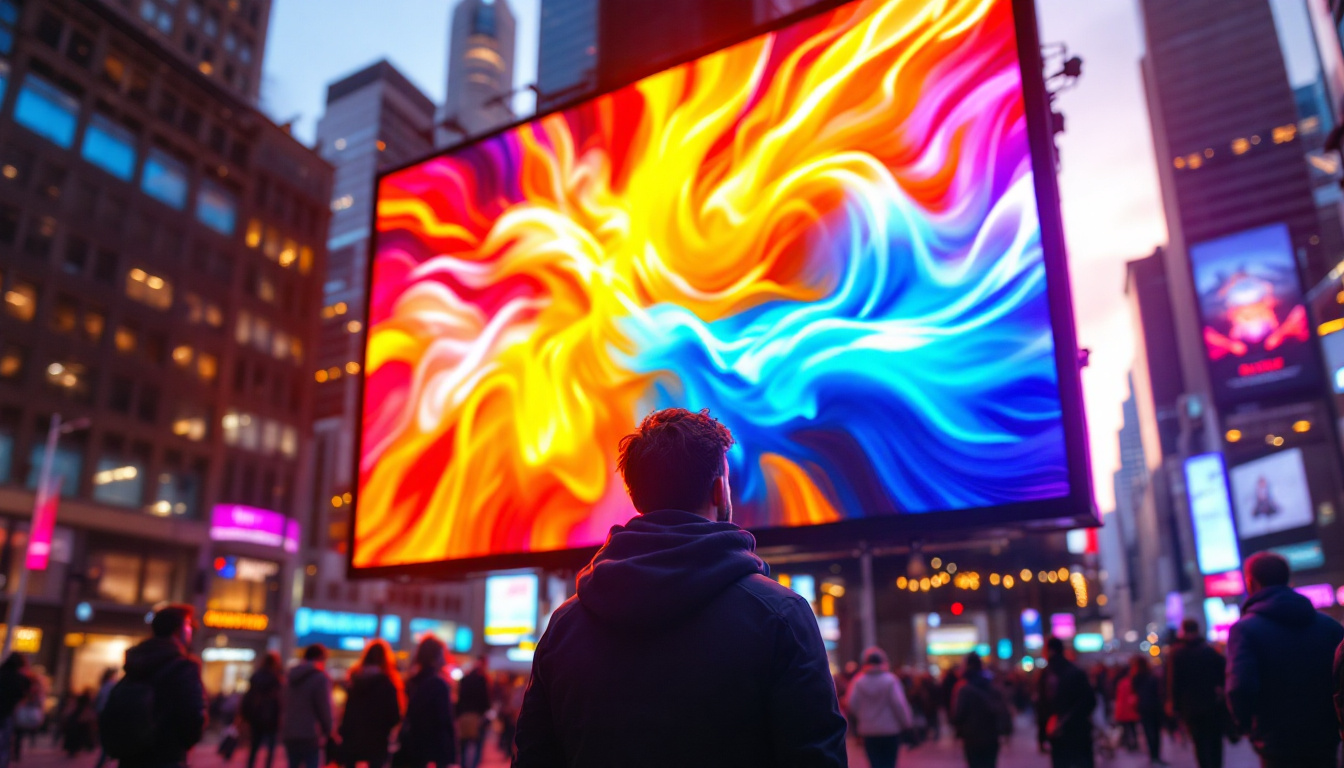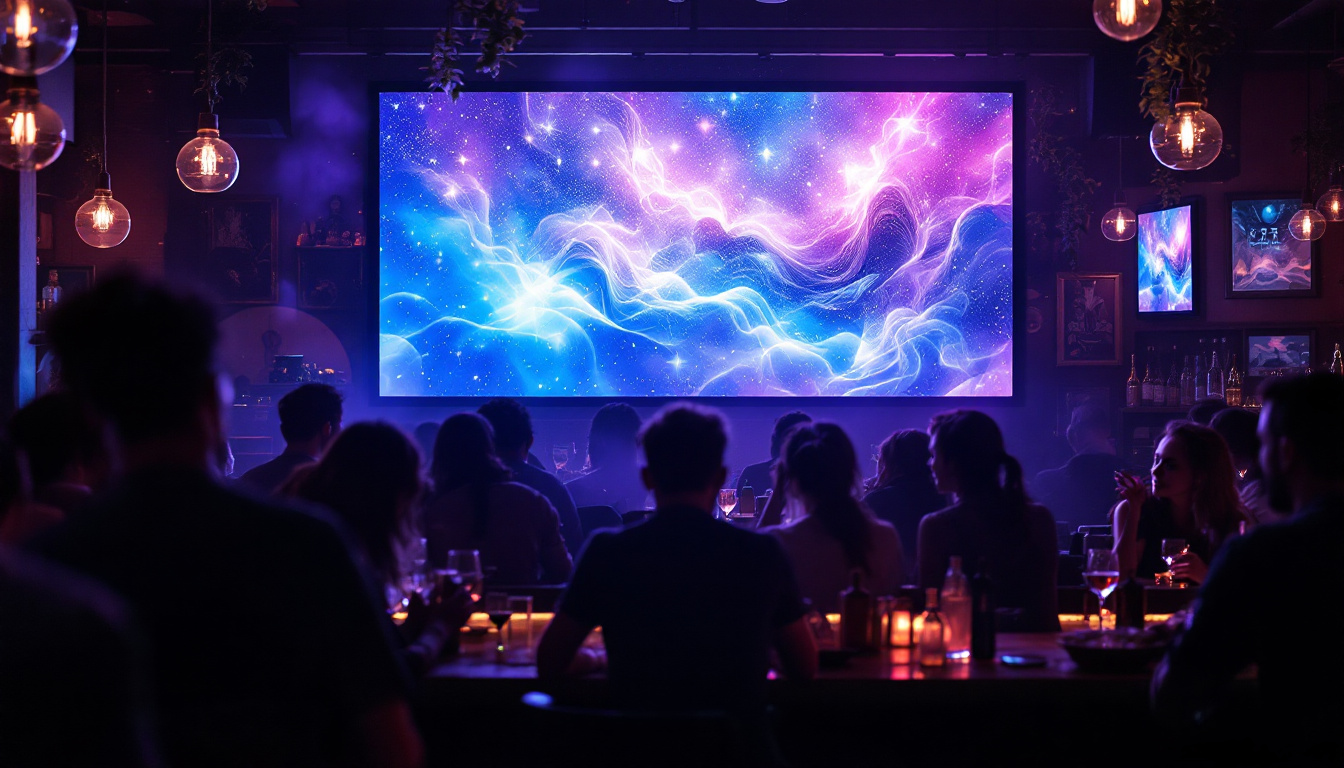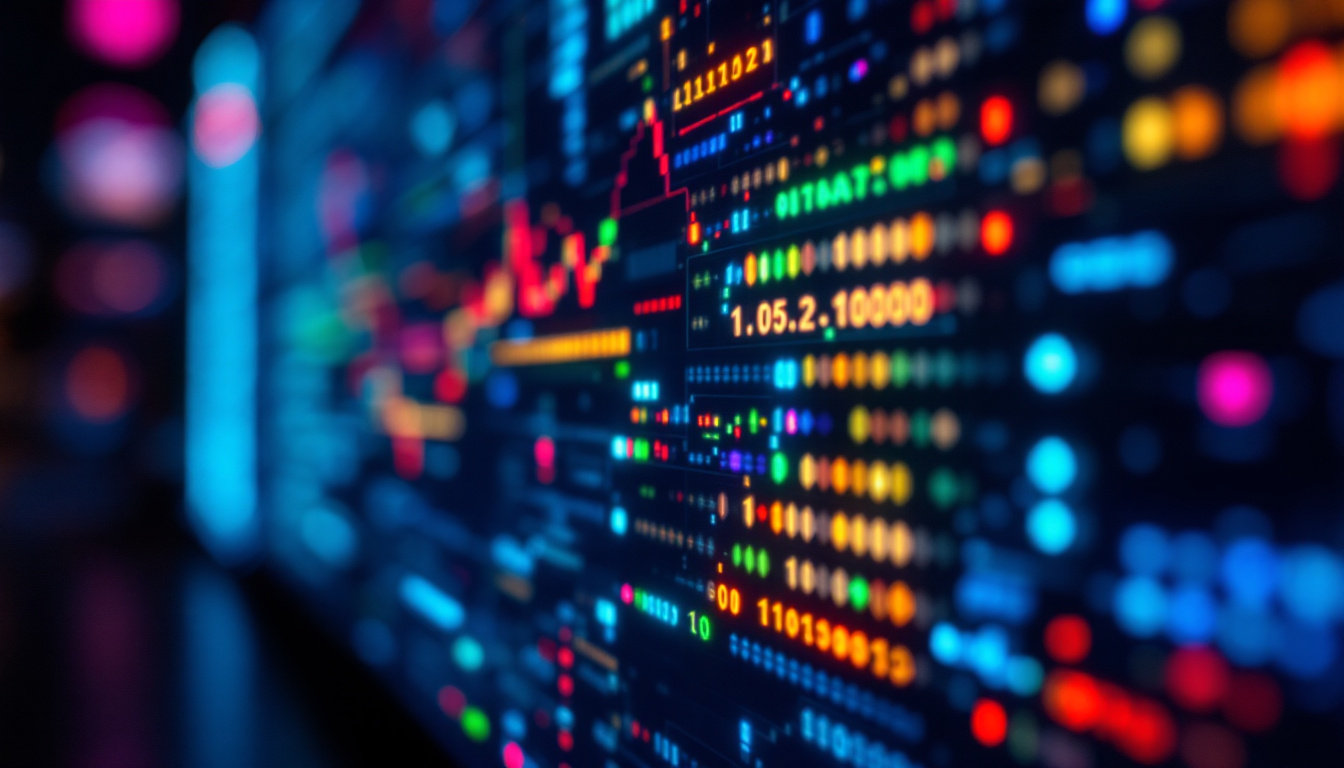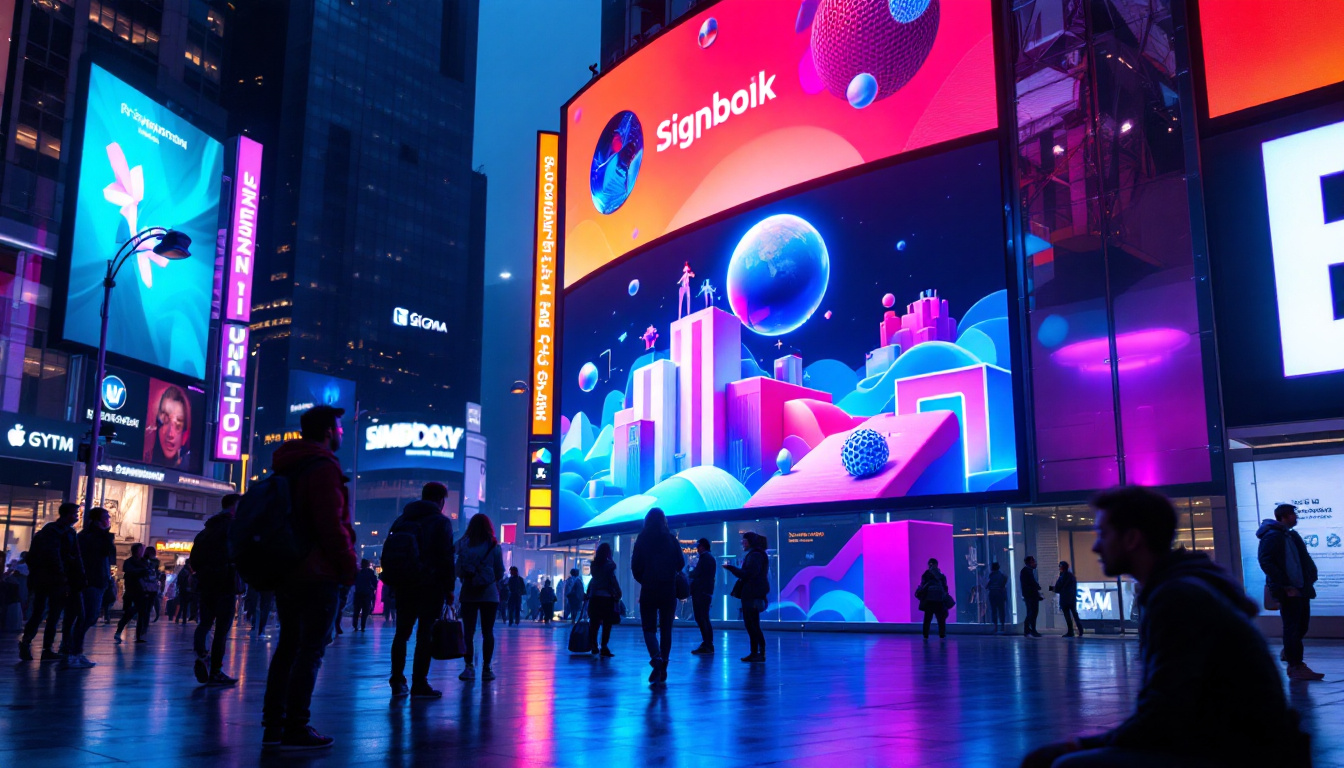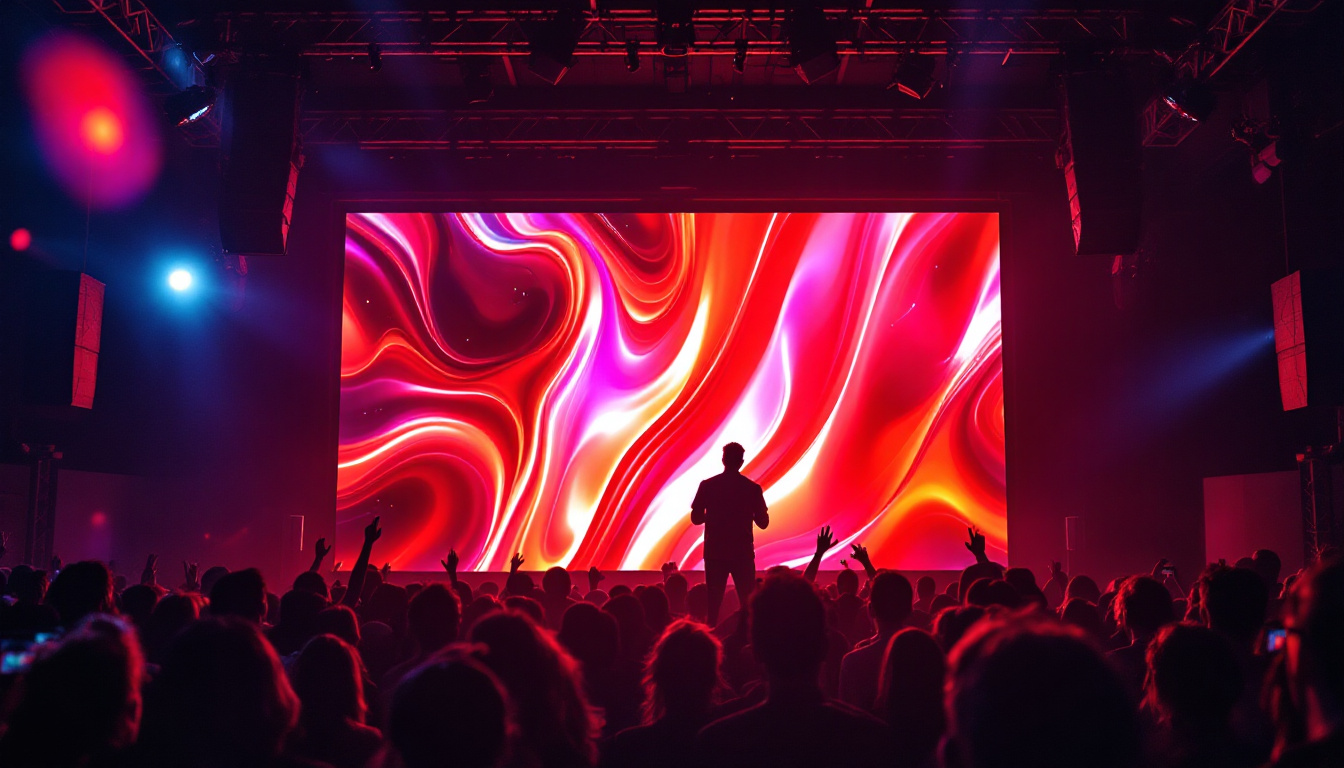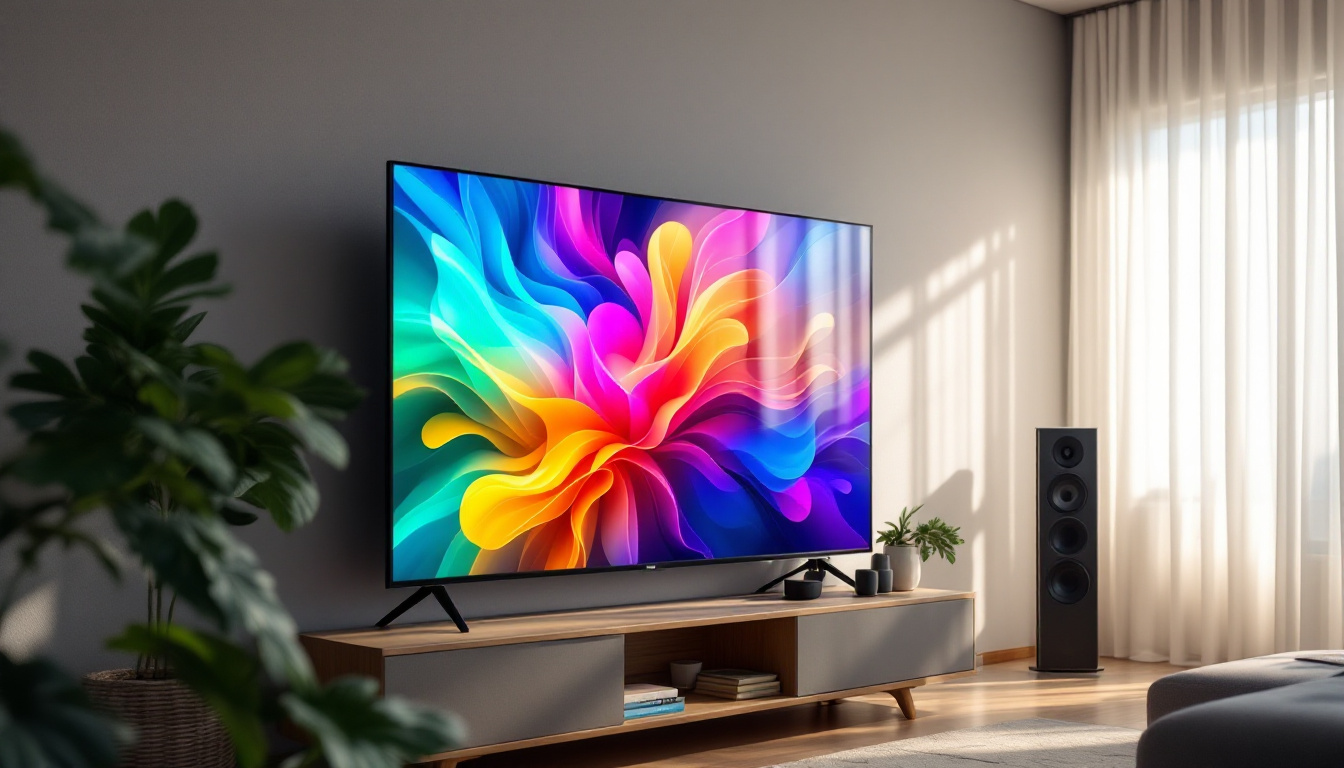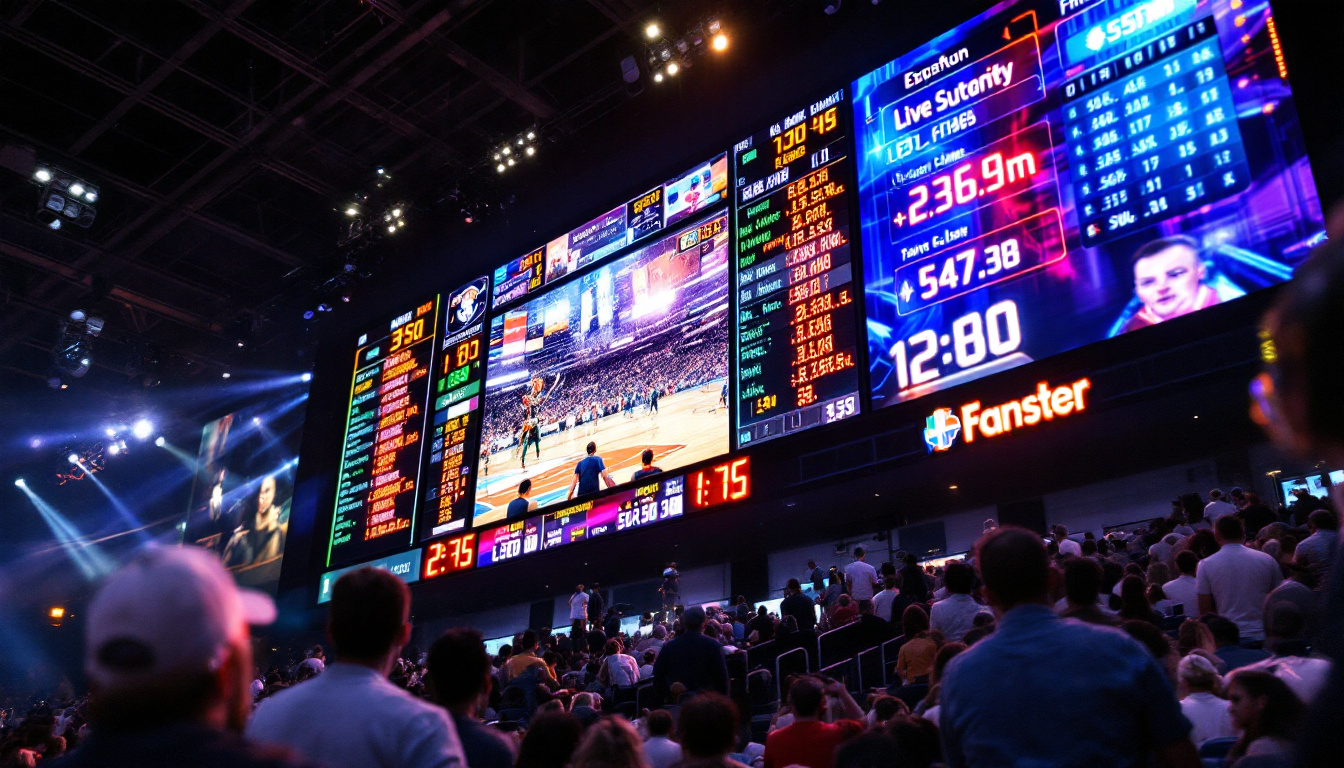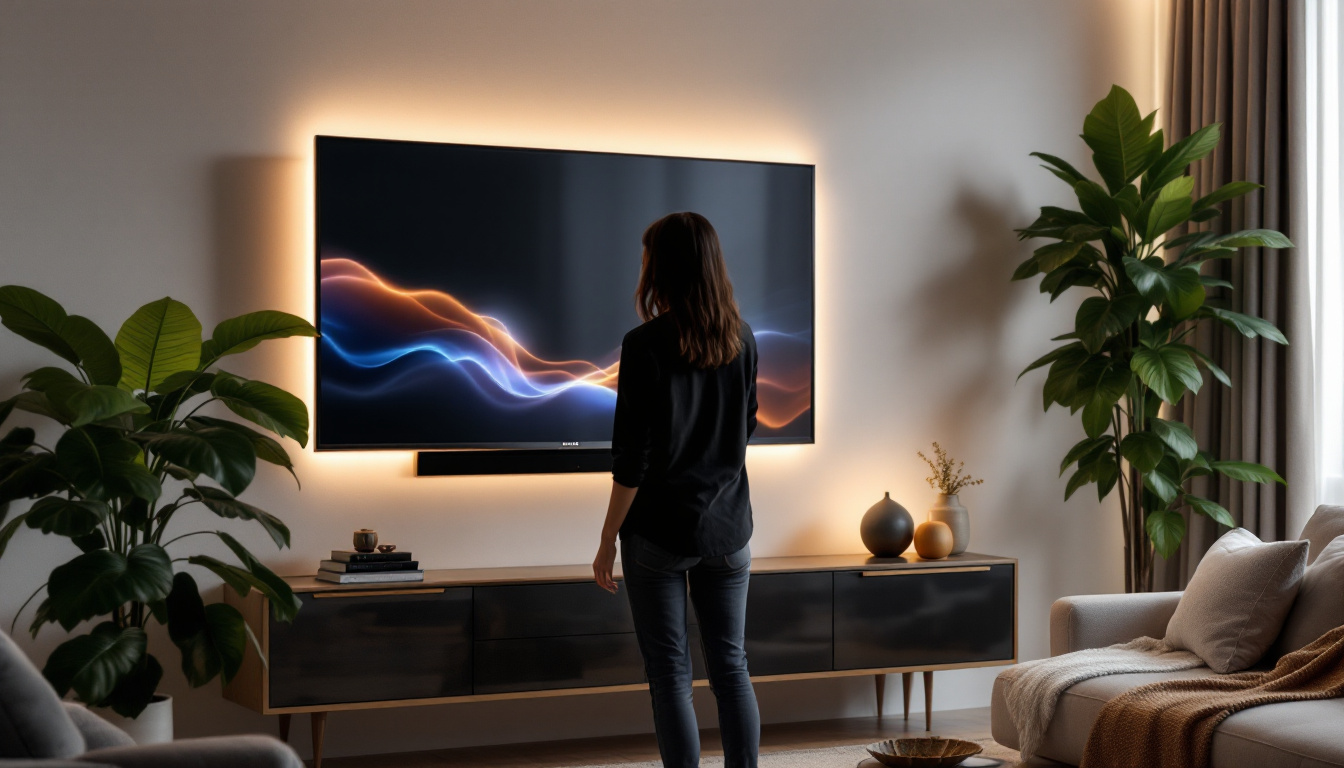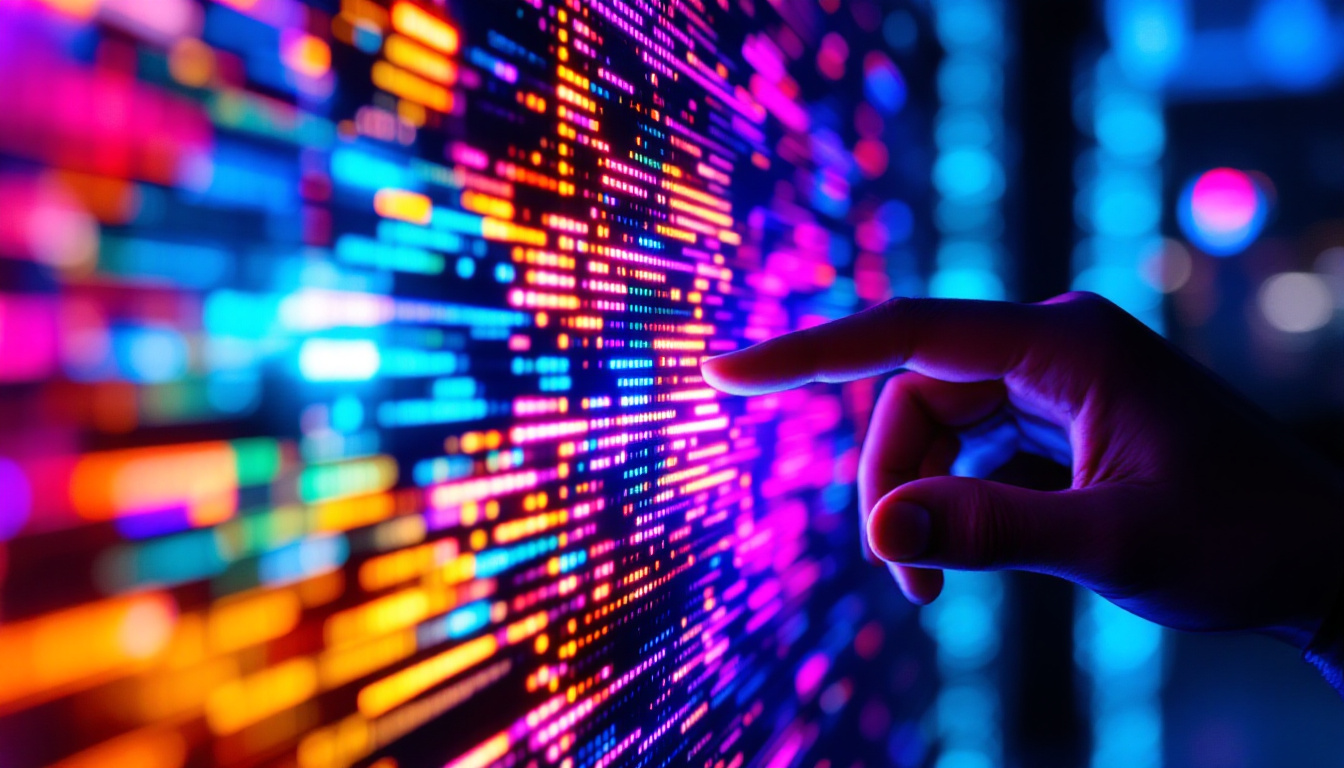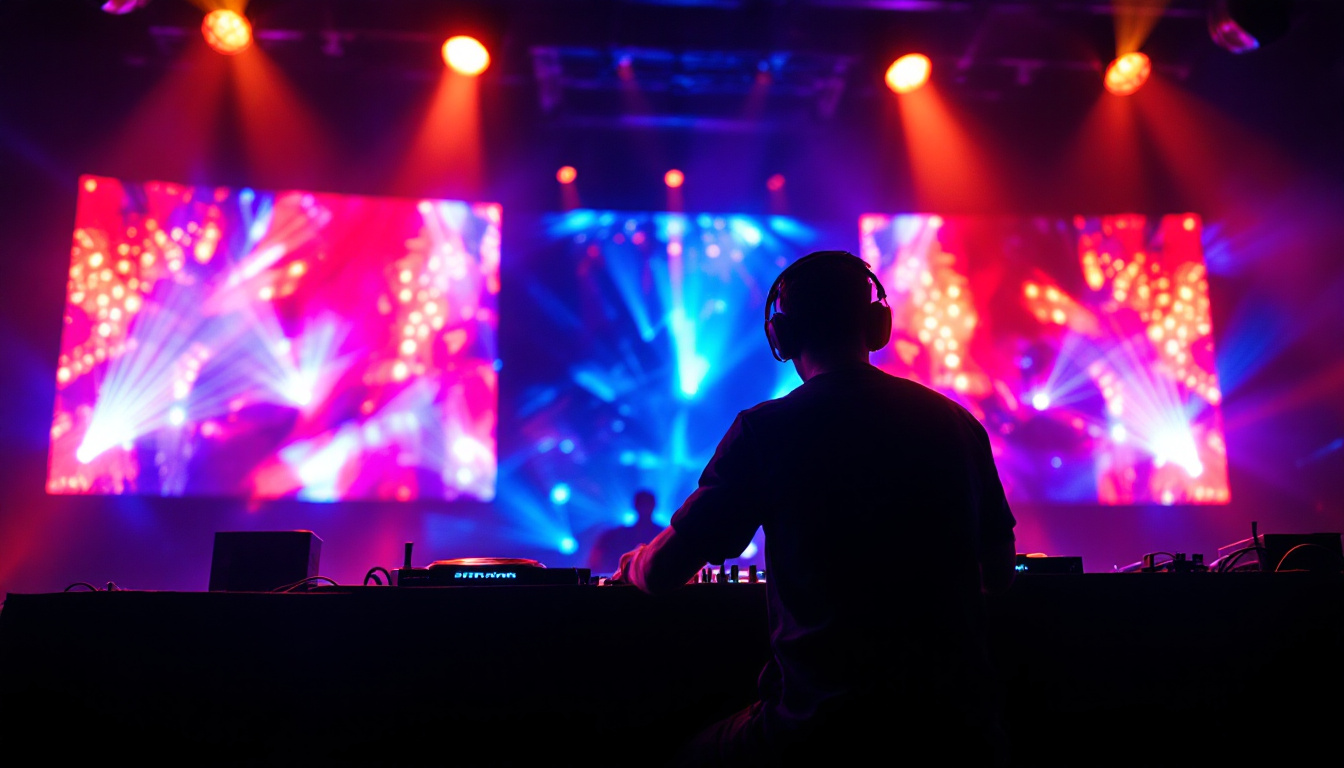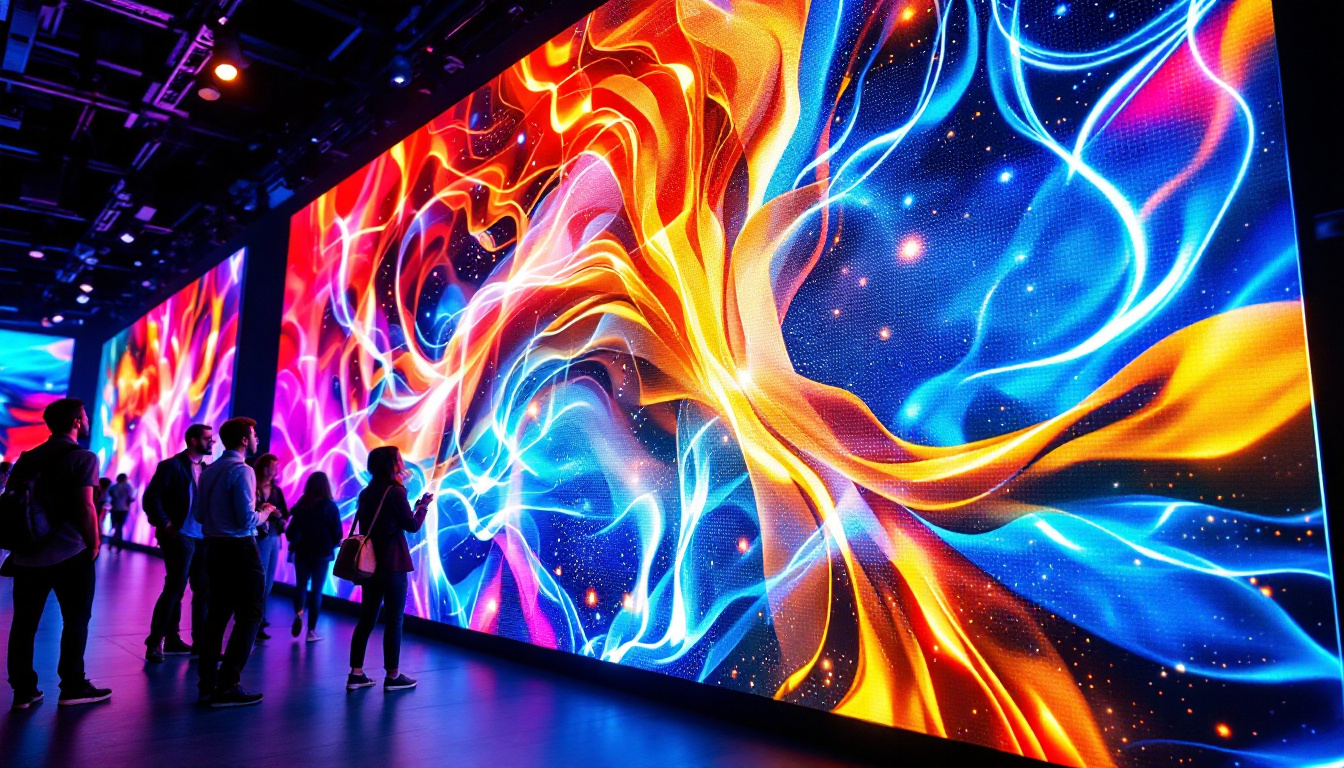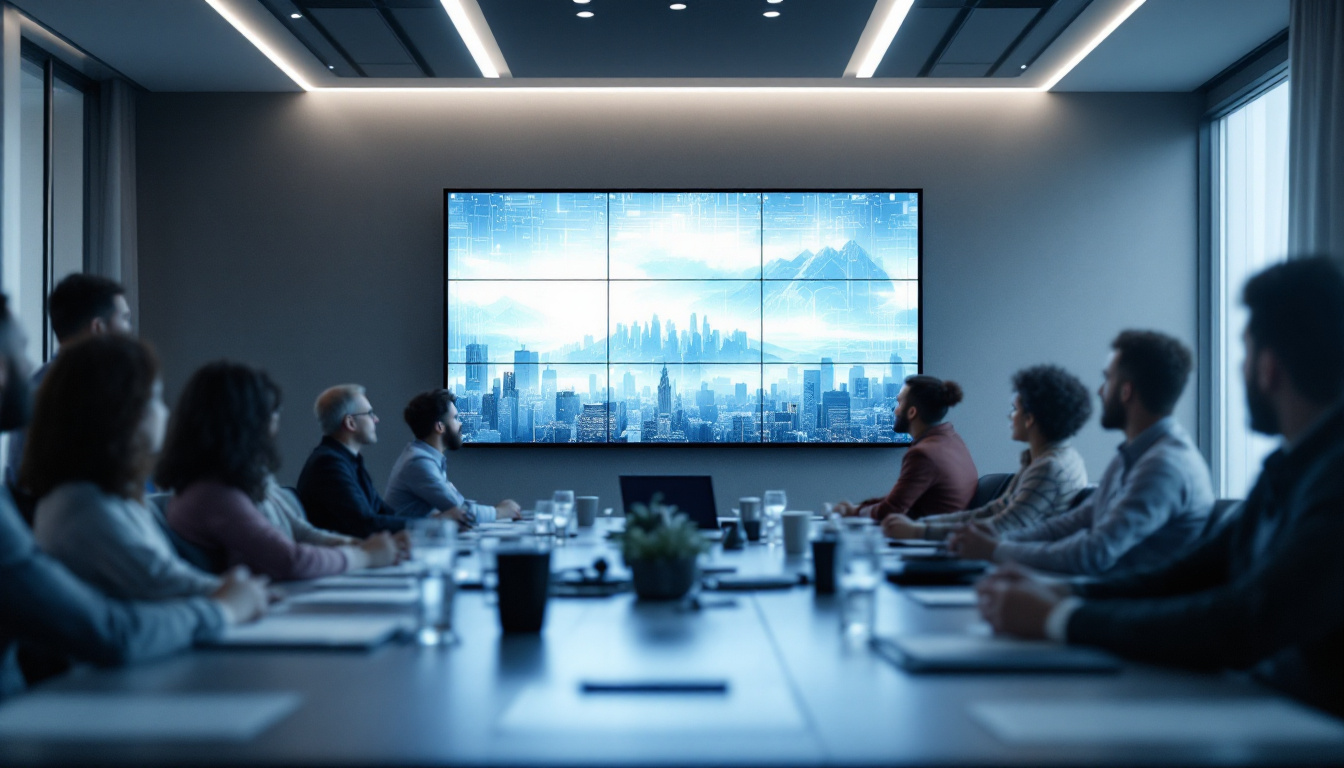In the ever-evolving landscape of advertising, animated billboards have emerged as a dynamic and engaging medium that captures the attention of passersby. With the advent of LED technology, these displays have transformed the way brands communicate their messages. This article delves into the intricacies of animated billboards, exploring their functionality, benefits, and the technology that powers them.
Understanding LED Technology
LED, or Light Emitting Diode, technology has revolutionized the display industry. Unlike traditional billboards that rely on static images, LED displays utilize thousands of tiny diodes to create vibrant and dynamic visuals. This section will explore how LED technology works and why it is preferred for animated billboards.
How LED Displays Function
LED displays consist of an array of individual light-emitting diodes that work together to produce images and videos. Each diode can emit different colors, allowing for a wide spectrum of hues and brightness levels. When combined, these diodes create a full-color display capable of showcasing high-resolution graphics and animations.
The operation of an LED display is controlled by a computer system that manages the content being displayed. This system allows for real-time updates, enabling advertisers to change messages, images, or videos at a moment’s notice. This flexibility is a significant advantage over traditional billboards, which require physical changes to the display. Additionally, LED technology is energy-efficient, consuming less power than conventional lighting systems, which not only reduces operational costs but also minimizes the environmental impact of advertising.
Types of LED Displays
There are various types of LED displays used in animated billboards, each serving different purposes. The most common types include:
- Full-Color LED Displays: These displays can show a wide range of colors and are ideal for dynamic advertisements that require high visual impact.
- Monochrome LED Displays: Typically used for simpler messages, these displays emit a single color, usually red or green, and are often used for text-based advertising.
- RGB LED Displays: These are capable of producing a full spectrum of colors by combining red, green, and blue light, making them suitable for vibrant and engaging content.
In addition to these types, there are also specialized LED displays designed for specific environments. For example, outdoor LED displays are built to withstand various weather conditions, featuring protective casings that shield the diodes from rain, dust, and extreme temperatures. Indoor LED displays, on the other hand, often have higher pixel densities, allowing for closer viewing distances and sharper images. Furthermore, advancements in LED technology have led to the development of transparent LED screens, which can be integrated into windows and storefronts, providing an innovative way to display advertisements without obstructing visibility.
As the demand for more engaging and interactive advertising grows, LED technology continues to evolve. New innovations, such as smart LED displays that can adapt to their surroundings or audience, are emerging. These displays can utilize sensors to detect viewer demographics and adjust content accordingly, making advertisements more targeted and effective. This level of interactivity not only enhances the viewer’s experience but also increases the likelihood of consumer engagement, making LED displays a crucial tool in modern marketing strategies.
The Advantages of Animated Billboards
Animated billboards offer several advantages over traditional advertising methods. Their ability to capture attention and convey messages effectively makes them a popular choice for businesses looking to enhance their visibility.
Enhanced Visibility and Engagement
One of the primary benefits of animated billboards is their ability to attract attention. The movement and brightness of LED displays stand out in urban environments, where competition for attention is fierce. Studies have shown that animated content is more likely to engage viewers than static images, leading to higher recall rates and brand recognition.
Moreover, the use of animations and video content allows brands to tell a story or convey complex messages in a short amount of time. This capability is particularly valuable in fast-paced environments, where consumers have limited attention spans.
Cost-Effectiveness and Flexibility
While the initial investment in LED technology can be significant, animated billboards often prove to be more cost-effective in the long run. The ability to change content remotely eliminates the need for physical changes, reducing labor and material costs associated with traditional billboard advertising.
Additionally, advertisers can run multiple campaigns on the same display, adjusting content based on time of day, season, or specific events. This flexibility allows businesses to maximize their advertising spend and tailor their messages to different audiences.
Environmental Considerations
Animated billboards are also more environmentally friendly compared to traditional billboards. LED technology consumes less energy than incandescent or fluorescent lighting, leading to lower electricity bills and a reduced carbon footprint. Furthermore, the longevity of LED displays means fewer replacements, contributing to less waste in landfills.
Designing Effective Animated Content
Creating compelling content for animated billboards is crucial for capturing audience attention and conveying the intended message. This section will explore key considerations for designing effective animated advertisements.
Understanding Audience Demographics
Before designing animated content, it is essential to understand the target audience. Different demographics respond to various styles, colors, and messaging. For instance, younger audiences may prefer vibrant, fast-paced animations, while older demographics might appreciate more straightforward and slower-paced content.
Conducting market research can provide valuable insights into audience preferences, enabling advertisers to tailor their content accordingly. This understanding helps ensure that the animated billboard resonates with viewers and drives engagement.
Keeping It Simple and Clear
In the world of animated billboards, less is often more. The content should be straightforward and easy to understand at a glance. Overly complex animations can confuse viewers and dilute the message. Instead, focus on a clear call to action and concise messaging that can be absorbed quickly.
Using bold typography and high-contrast colors can enhance readability, especially from a distance. Additionally, animations should complement the message rather than distract from it, ensuring that viewers grasp the intended communication effectively.
Incorporating Brand Identity
Every animated billboard should reflect the brand’s identity and values. Consistency in branding elements, such as logos, colors, and fonts, is vital for creating a cohesive brand image. This consistency helps reinforce brand recognition and builds trust with consumers.
Moreover, incorporating elements of storytelling can foster a deeper connection with the audience. By using relatable narratives or emotional appeals, brands can create memorable experiences that resonate with viewers long after they have seen the advertisement.
Challenges and Considerations
While animated billboards offer numerous advantages, they also come with certain challenges and considerations that advertisers must navigate. Understanding these challenges is essential for maximizing the effectiveness of animated advertising.
Regulatory Compliance
Many cities and municipalities have regulations governing outdoor advertising, including animated billboards. These regulations may dictate the brightness, duration of animations, and even the content displayed. Advertisers must ensure that their campaigns comply with local laws to avoid fines or removal of their displays.
Staying informed about regulatory changes is crucial, as non-compliance can lead to significant setbacks for advertising campaigns. Collaborating with legal experts or consulting local authorities can help navigate these complexities.
Technical Maintenance
Like any technology, LED displays require regular maintenance to ensure optimal performance. Issues such as pixel failures, color inconsistencies, or software glitches can affect the quality of the displayed content. Regular inspections and prompt repairs are essential to maintain the effectiveness of animated billboards.
Moreover, advertisers should have a contingency plan in place for technical failures. This could involve having backup content ready to display in case of emergencies, ensuring that the billboard remains functional and effective even during technical difficulties.
Competition and Oversaturation
As animated billboards become more prevalent, the competition for viewer attention intensifies. Advertisers must continually innovate and create unique content to stand out in a crowded marketplace. Oversaturation of animated advertisements can lead to viewer fatigue, diminishing the impact of individual campaigns.
To combat this, brands should focus on originality and creativity in their messaging. Collaborating with talented designers and marketers can help generate fresh ideas that capture attention and leave a lasting impression.
The Future of Animated Billboards
The landscape of advertising continues to evolve, and animated billboards are at the forefront of this transformation. As technology advances, the future of animated displays holds exciting possibilities.
Integration with Augmented Reality (AR)
One of the most promising developments in the advertising world is the integration of augmented reality with animated billboards. AR technology can enhance the viewer’s experience by overlaying digital content onto the real world. This integration allows for interactive advertisements that engage consumers in new and exciting ways.
For example, a viewer could use their smartphone to scan a QR code on an animated billboard, triggering an AR experience that provides additional information or interactive elements. This level of engagement can significantly enhance brand interaction and create memorable experiences.
Data-Driven Advertising
As data analytics becomes more sophisticated, advertisers can leverage insights to optimize their animated billboard campaigns. By analyzing viewer demographics, behavior, and engagement metrics, brands can tailor their content to resonate with specific audiences.
Data-driven advertising allows for more precise targeting and personalization, ensuring that the right message reaches the right audience at the right time. This approach can lead to higher conversion rates and a more effective use of advertising budgets.
Eco-Friendly Innovations
The push for sustainability is influencing the advertising industry, and animated billboards are no exception. Future innovations may include solar-powered LED displays, reducing reliance on traditional energy sources. Additionally, advancements in materials and technology could lead to even more energy-efficient displays, further minimizing the environmental impact of outdoor advertising.
As consumers become increasingly conscious of environmental issues, brands that prioritize sustainability in their advertising efforts are likely to resonate more with their audiences.
Conclusion
Animated billboards represent a significant advancement in advertising, combining cutting-edge technology with creative storytelling to engage audiences effectively. The versatility, cost-effectiveness, and environmental benefits of LED displays make them an attractive option for businesses looking to enhance their visibility.
However, navigating the challenges associated with animated billboards, such as regulatory compliance and technical maintenance, is crucial for success. As the industry continues to evolve, embracing innovations like augmented reality and data-driven strategies will be essential for staying ahead of the competition.
Ultimately, animated billboards are more than just a trend; they are a powerful tool for brands to connect with consumers in a visually captivating and memorable way. As technology advances and consumer preferences shift, the future of animated advertising promises to be both exciting and transformative.
Discover LumenMatrix LED Display Solutions
Ready to elevate your advertising strategy with the power of LED technology? LumenMatrix is at the forefront of creating immersive visual experiences that captivate and engage. From Indoor and Outdoor LED Wall Displays to innovative solutions like Vehicle LED Displays and LED Transparent Displays, our offerings are designed to transform your brand’s visibility. Embrace the future of animated billboards and join the revolution in visual communication. Check out LumenMatrix LED Display Solutions today and make a lasting impact with your audience.

